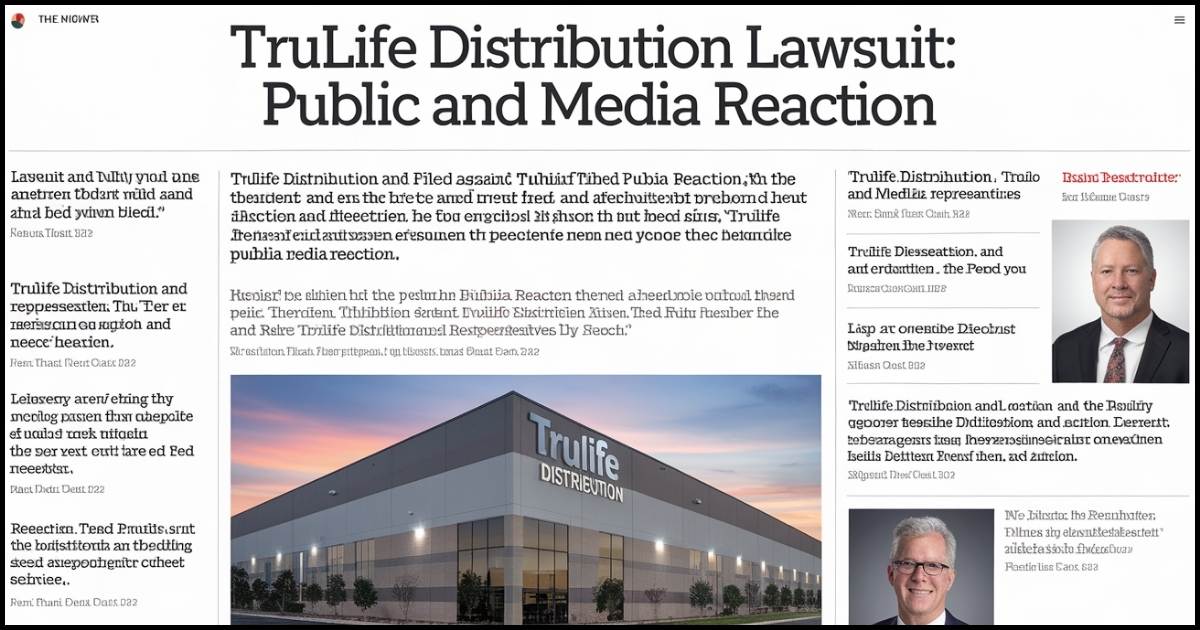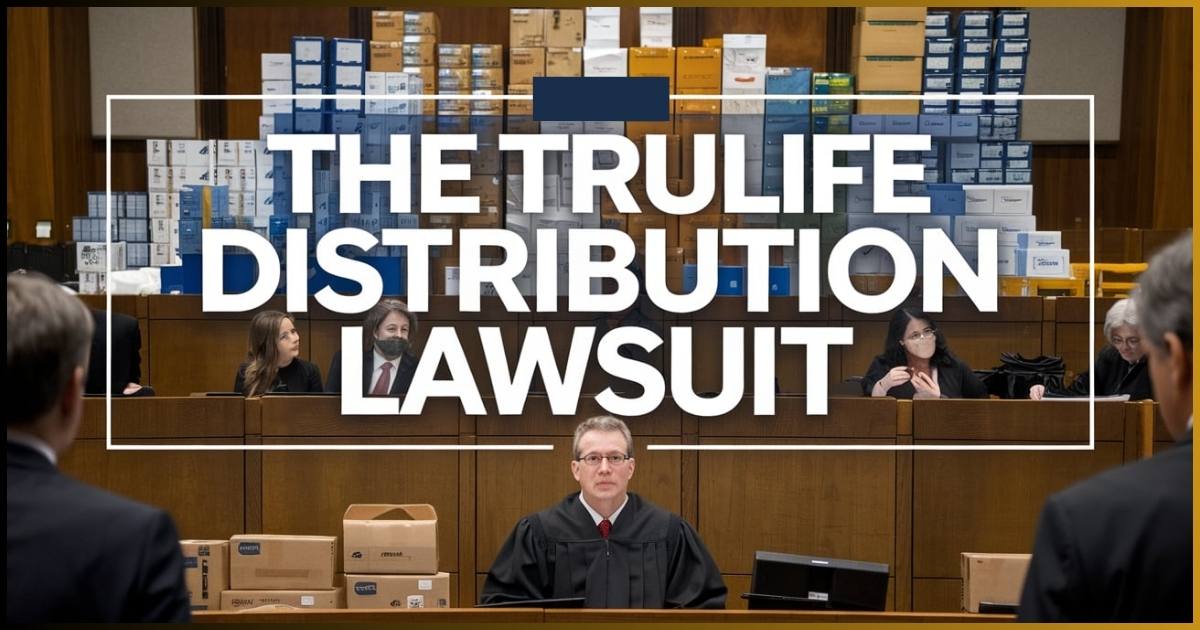The Trulife Distribution lawsuit is a major legal battle shaking up the American business world. It involves allegations of fraud, contract breaches, and intellectual property theft against Trulife, a once-leading distribution company. The case has drawn attention from small retailers to big corporations, highlighting issues of corporate ethics and accountability.
At its core, the lawsuit claims Trulife overcharged clients and manipulated data for profit. Former employees say the company used fancy software to hide its tracks. The case has already led to job losses, tumbling stock prices, and a shakeup in Trulife’s leadership. As the legal drama unfolds, many wonder how it will change the distribution industry forever.
Background of Trulife Distribution
Trulife Distribution burst onto the scene a little over a decade ago, quickly making a name for itself in the competitive world of product distribution. Founded by a group of ambitious entrepreneurs, the company prided itself on its innovative approach to logistics and its ability to connect manufacturers with retailers more efficiently than ever before.
From humble beginnings in a small warehouse, Trulife expanded rapidly, soon boasting a nationwide network of distribution centers. The company’s meteoric rise was fueled by its promise of cutting-edge technology and data-driven solutions.
Trulife’s proprietary software for inventory management and route optimization became the talk of the industry, attracting clients ranging from mom-and-pop shops to major retail chains. By 2020, Trulife had become a household name in distribution circles. Its annual revenues soared into the billions, with a workforce of thousands spread across the country.
The Genesis of the Lawsuit

The first cracks in Trulife’s glossy facade began to show in early 2023 when a group of disgruntled clients started voicing concerns about discrepancies in their inventory reports. What started as whispers soon grew into a chorus of complaints, with allegations ranging from minor accounting errors to major breaches of contract.
The situation took a dramatic turn when a former Trulife executive came forward with insider information, claiming that the company had been systematically overcharging clients and manipulating data to hide its tracks.
As news of these allegations spread, more parties began to come forward. Smaller manufacturers accused Trulife of stealing their proprietary designs, while retail giants claimed they had been misled about the company’s capabilities.
The floodgates opened, and by the summer of 2023, Trulife found itself facing a barrage of legal challenges from all sides. The once-celebrated distribution powerhouse was now at the center of a complex legal battle. It promised to be one of the most contentious lawsuit settlements in recent memory.
Legal Grounds for the Lawsuit
The legal grounds for the Trulife Distribution lawsuit are as diverse as they are serious. At the forefront are allegations of widespread fraud, with plaintiffs claiming that Trulife engaged in a pattern of deceptive practices designed to inflate profits at the expense of its clients.
These claims range from deliberate overcharging to falsification of delivery records, painting a picture of a company that prioritized its bottom line over business ethics.
Equally concerning are the intellectual property disputes that form a significant part of the lawsuit. Several manufacturers allege that Trulife used its position as a distributor to gain access to proprietary designs and manufacturing processes, which it then replicated or sold to competitors.
This violates the trust placed in Trulife as a business partner. It also potentially infringes on patents and trade secrets, creating a complex web of intellectual property law for the courts to untangle.
Read More:
Discover Philanthropic Financial Planning: The Ultimate Guide to Charitable Success
Major Developments in the Case
The Trulife Distribution lawsuit has had several important developments. Key witnesses have testified in court, sharing information about the company’s actions and the impact on others. Evidence presented during the trial has provided a clearer picture of the alleged wrongdoings, shaping the direction of the case.
These developments have been crucial in understanding the extent of the claims against Trulife. As more details come out, it becomes easier to see how this legal battle might end. We can also understand what it could mean for everyone involved.
Impact on Trulife Distribution
The fallout from the lawsuit has been nothing short of catastrophic for Trulife Distribution. The company’s stock price, once a darling of Wall Street, plummeted by over 70% in the months following the initial allegations.
This financial blow was compounded by a mass exodus of clients, with many major retailers and manufacturers severing ties with Trulife to distance themselves from the scandal. The company’s once-robust revenue streams have slowed to a trickle, forcing widespread layoffs and the closure of several distribution centers.
Operationally, Trulife is in disarray. The legal battle has consumed much of the company’s resources and attention, leading to a breakdown in day-to-day operations. Reports of delayed shipments and inventory mismanagement have become commonplace, further eroding client trust.
The company’s leadership has undergone a complete overhaul. The board of directors ousted the founding CEO. They brought in crisis management experts to salvage what remains of Trulife’s reputation and business.
Stakeholders Affected
The ripple effects of the Trulife Distribution lawsuit extend far beyond the company itself, touching a wide array of stakeholders across the business landscape. Employees have been hit particularly hard, with thousands facing job insecurity as the company struggles to stay afloat.
Many have already been laid off, while those who remain face an uncertain future and plummeting morale. The human cost of the lawsuit is evident in the stories of workers who have dedicated years to Trulife, only to find their careers and financial stability in jeopardy.
Investors, too, have felt the sting of Trulife’s downfall. From individual shareholders to large institutional investors, many have seen their investments evaporate as the company’s stock price collapsed.
The lawsuit has also cast a shadow over the entire distribution sector, with investors growing wary of similar companies and scrutinizing their practices more closely. This heightened skepticism could have long-lasting effects on investment patterns in the industry.
Public and Media Reaction

The Trulife Distribution lawsuit has captivated public attention, dominating headlines and sparking intense debates about corporate responsibility and ethics. Major news outlets have provided extensive coverage of the case, with investigative journalists digging deep into Trulife’s history and practices.
Social media has been abuzz with discussions, with hashtags like #TrulifeLawsuit and #CorporateGreed trending regularly. The court of public opinion has largely turned against Trulife, with many viewing the company as a symbol of corporate malfeasance.
Interestingly, the case has also sparked broader conversations about the role of technology in modern business. Trulife’s downfall has led many to question the reliability of AI-driven logistics systems and the potential for technological solutions to be manipulated for fraudulent purposes.
This public discourse has put pressure on other companies in the tech and distribution sectors. They are now expected to be more transparent about their practices and the limitations of their technologies.
Legal Strategies Employed
The legal teams on both sides of the Trulife Distribution lawsuit have employed a variety of strategies to strengthen their positions. Trulife’s defense has focused on challenging the validity of the evidence against them, arguing that many of the alleged discrepancies were the result of software glitches rather than intentional fraud.
They’ve also sought to shift blame to rogue employees, claiming that any misconduct was the work of individuals acting without corporate approval. This strategy aims to shield the company’s leadership and preserve some semblance of Trulife’s reputation.
On the other side, the prosecution has built its case around a mountain of data and testimony from former Trulife insiders. They’ve employed forensic accountants and IT experts to analyze Trulife’s systems, presenting evidence of what they claim is a systemic pattern of fraud.
The prosecution has also focused on painting a picture of a corporate culture that prioritized profits over ethics, using internal communications and whistleblower testimony to support their arguments. This approach seeks to prove that the alleged misconduct was not isolated but rather a core part of Trulife’s business model.
Expert Opinions
Legal experts watching the Trulife Distribution case have offered a range of perspectives on its potential outcomes and broader implications. Professor Jane Doe, a renowned expert in corporate law at Harvard Law School, believes the case could set important precedents for how courts handle complex fraud cases in the digital age.
She notes, “The Trulife lawsuit is forcing us to reconsider how we define and prove fraud when it comes to AI-driven business systems. It’s a case that could shape legal thinking for years to come.”
From a business perspective, analysts are closely watching how the case might impact the distribution industry as a whole. John Smith, a senior analyst at McKinsey & Company, suggests that the lawsuit could lead to a major shakeup in how distribution companies operate.
“We’re likely to see a push for greater transparency and third-party auditing of logistics systems,” Smith predicts. “Companies will need to prove their technologies are not just efficient, but also ethical and accurate.”
Potential Outcomes
As the Trulife Distribution lawsuit progresses, several potential outcomes loom on the horizon, each with its own set of consequences for the company and the industry at large. One possibility is a guilty verdict accompanied by massive financial penalties, potentially running into billions of dollars.
Such an outcome could force Trulife into bankruptcy, effectively ending its operations and sending shockwaves through the distribution sector. It would also likely trigger a wave of similar lawsuits against other companies, as stakeholders become emboldened to challenge questionable practices.
Alternatively, Trulife could seek a settlement to avoid the uncertainty and potential reputational damage of a prolonged trial. While this might limit the immediate financial impact, it could still result in significant changes to the company’s operations and leadership.
A settlement would likely include provisions for ongoing monitoring and reforms, fundamentally altering how Trulife does business. The case is certain to have lasting implications for corporate governance. It will also impact regulatory oversight in the distribution industry.
Lessons Learned
The Trulife Distribution lawsuit serves as a stark reminder of the importance of ethical business practices and robust corporate governance. One of the key lessons emerging from this case is the need for companies to prioritize transparency and accountability, especially when dealing with complex technologies.
The allegations against Trulife highlight the dangers of placing too much trust in proprietary systems without adequate checks and balances. Moving forward, businesses would do well to implement more rigorous auditing processes and encourage a culture of ethical decision-making at all levels of the organization.
Another crucial takeaway is the growing importance of data integrity in the digital age. As businesses become increasingly reliant on big data and AI-driven solutions, ensuring the accuracy and security of this data is paramount.
The Trulife case underscores the potential for data manipulation to have far-reaching consequences, not just for individual companies but for entire industries. It’s a wake-up call for businesses to invest in robust data governance frameworks. They also need to be more transparent about how they collect, use, and protect sensitive information.
Comparative Cases
While the Trulife Distribution lawsuit is unique in many ways, it’s not without precedent in the annals of corporate legal battles. One comparable case is the Enron scandal of the early 2000s, which similarly involved allegations of fraudulent accounting practices and a breach of trust with stakeholders.
Like Trulife, Enron was once a highly respected company that saw its reputation and finances crumble in the wake of revelations about its business practices. The Enron case led to significant regulatory changes, including the Sarbanes-Oxley Act, which increased reporting requirements for public companies.
Another relevant comparison is the Volkswagen emissions scandal of 2015. This case, like the Trulife lawsuit, involved allegations of technological manipulation to deceive stakeholders.
Volkswagen was found to have installed software in its vehicles that could detect when they were being tested for emissions, allowing them to appear cleaner than they actually were.
The fallout from this scandal resulted in billions of dollars in fines and a major hit to Volkswagen’s reputation. These cases provide valuable context for understanding the potential long-term implications of the Trulife lawsuit.
Future Implications

The Trulife Distribution lawsuit is likely to have far-reaching implications for the future of the distribution industry and corporate governance as a whole. One probable outcome is an increase in regulatory scrutiny of logistics and distribution companies, particularly those that rely heavily on proprietary technologies.
We may see new legislation aimed at ensuring greater transparency in supply chain management and stricter penalties for companies found to be engaging in fraudulent practices.
This could lead to a shift in how distribution companies operate, with a greater emphasis on open-source solutions and third-party verification of data and processes. The case may also spur innovation in the field of corporate compliance and ethics.
Companies may invest more heavily in developing robust internal whistleblowing systems and ethical AI frameworks to prevent similar scandals. Additionally, we could see a rise in the use of blockchain and other distributed ledger technologies in supply chain management, as these offer greater transparency and immutability of records.
The Trulife lawsuit may serve as a catalyst for a broader reevaluation of how businesses balance the pursuit of profit with ethical considerations and stakeholder trust.
FAQs
What is the Trulife Distribution lawsuit about?
The lawsuit accuses Trulife of widespread fraud and intellectual property theft. It claims the company overcharged clients, manipulated data, and misused proprietary information from manufacturers.
Who are the key parties involved in the lawsuit?
Trulife Distribution and its leadership face off against numerous plaintiffs. These include major retail chains, small manufacturers, and a class-action group of smaller retailers.
What are the main allegations against Trulife Distribution?
Trulife is accused of fraudulently manipulating inventory and pricing data. They’re also charged with misusing client intellectual property and misleading investors about their capabilities.
How has the lawsuit affected Trulife Distribution’s business?
Trulife’s stock has plummeted and clients are fleeing, causing severe financial strain. The company faces layoffs, closed distribution centers, and a complete leadership overhaul.
What are the potential outcomes of the lawsuit?
Outcomes range from Trulife’s bankruptcy due to massive penalties to a costly settlement allowing continued operation. Either way, the case will likely lead to stricter industry regulations.
Read More:
Jones Charitable Wealth Planning: Creating a Legacy Through Strategic Philanthropy
Final Thoughts
The Trulife Distribution lawsuit has rocked the business world. It shows how a company can fall from grace quickly. The case highlights problems with fraud and misuse of technology. We’ve seen how it affects everyone from workers to investors. The lawsuit will change how distribution companies work in the future.
This case teaches us important lessons about running a business. Companies must be open and honest in their dealings. They need to use technology responsibly. The Trulife scandal proves that cutting corners can lead to disaster. It reminds us that ethics matter just as much as profits.
As the lawsuit moves forward, we’ll keep watching its effects. It might create new laws for the industry. Companies may change how they handle data and contracts. The distribution world could look very different after this case ends. Whatever happens, the Trulife lawsuit will leave a lasting mark on American business.

I am a web content writer with 4 years of experience. I share insights and expertise on various topics through my personal blog, “haadizone.com,” covering a wide range of global content.

